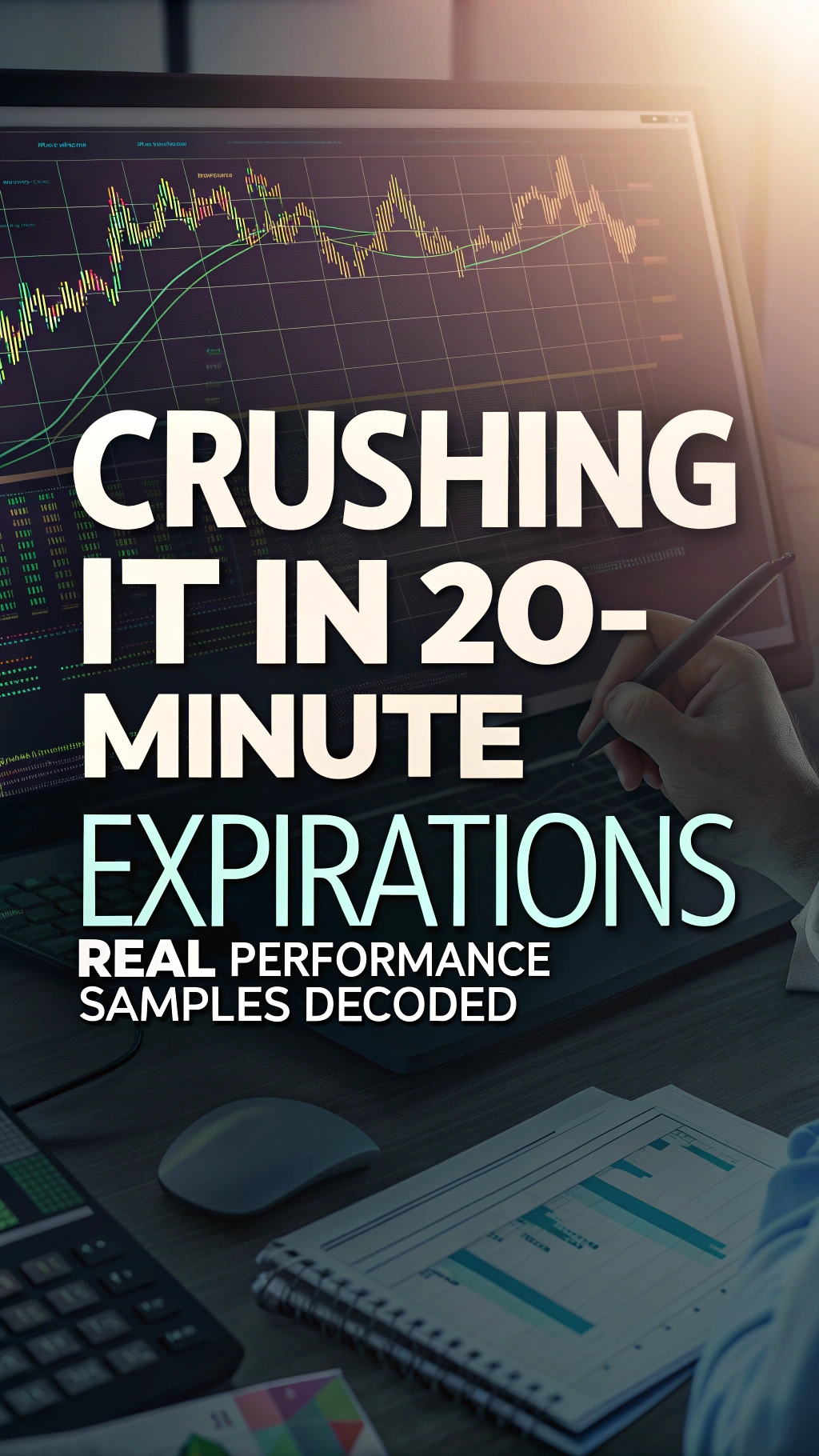Crushing It in 20-Minute Expirations – Real Performance Samples Decoded
Envision yourself as a sharp-eyed hunter in the dense undergrowth, not firing at every fleeting shadow, but analyzing the trails and signs—decoding the patterns that reveal when to hold steady or unleash a decisive strike. That’s the strategic depth behind crushing it in 20-minute expirations with systems like NADEX RED 2.0, where performance samples aren’t just numbers; they’re blueprints for stable, repeatable success. It’s not luck that yields 100% winning days; it’s the disciplined fusion of moderate frequency trading, momentum burst timing, and knowing precisely when to sit tight or pounce. In this post, we’ll decode real win-loss ratios from RED 2.0’s samples, breaking down how this approach turns market volatility into consistent cash flow. We’ll blend psychological resilience with tactical insights, showing why strategic patience outpaces random bets every time.
Let’s start by unpacking what these performance samples really mean in the context of NADEX’s 20-minute binaries. The system focuses on entering momentum bursts—those sharp price explosions—and riding them straight to expiration without constant meddling . A key sample shows 18 wins against 5 losses netting $6,500 on 10 contracts, part of a four-day total of $35,500, averaging $8,875 daily . This isn’t haphazard; it’s the result of a stable system traded in full, emphasizing quality entries over endless volume. When you analyze it, the 100% winning days emerge from sticking to the plan—taking all trades in sequence, not cherry-picking—which builds a rhythm where wins compound naturally . Psychologically, this fosters discipline: you’re training to recognize when a burst is ripe for striking, avoiding the trap of forcing trades during lulls that lead to unnecessary losses.
Decoding further, consider the variation in samples to grasp the strategic frequency at play. One session logs 20 wins to 6 losses for $7,000, while another shows 9 wins against 8 losses netting just $500—all on the US Small Cap 2000 using 1-minute bars . The narrower wins in that lower-net day highlight the importance of knowing when to sit tight: perhaps fewer bursts met the criteria, so fewer entries preserved capital rather than chasing weak signals. This isn’t luck; it’s the system’s design for dependability, where moderate frequency (think 10-20 trades in a session) allows you to strike decisively on high-probability setups . Contrast this with erratic approaches that bleed accounts dry—RED 2.0’s stability comes from its “enter and done” simplicity, letting expiration handle the outcome while you focus on the next opportunity . By stalking these patterns historically on charts from barchart.com, you decode why consistent execution yields those 100% days: it’s about aligning with market rhythm, not fighting it.
The psychology here is crucial—strategic frequency demands the mental fortitude to endure mixed days without deviation. In a sample like 15 wins to 2 losses for another $6,500, the low loss count reflects disciplined waiting: pouncing only on true momentum bursts, not impulsive moves that dilute your edge . Rushing entries on subpar signals? That’s how ratios tip toward losses, turning potential dominance into frustration. Instead, RED 2.0 encourages grooving into the system via demo practice, building the confidence to sit out noise and strike when it counts . This mindset shifts trading from a gamble to a skill, where even a modest $500 day is a win because it maintains overall stability, setting up for bigger hauls like scaling to 100 contracts for $88,750 daily potential .
To make this actionable, let’s decode a progression strategy from the samples. Start by reviewing historical data to spot burst patterns that led to high-win ratios—say, the 11 wins to 6 losses netting $2,500 . Practice in demo, replicating those entries until you can anticipate when to hold back. Then, in live trading, apply the frequency: aim for moderate trades per session, scaling position sizes only after proving calm execution . This isn’t about forcing 100% every day; it’s recognizing that strategic restraint—sitting tight during unclear periods—preserves your stack for when bursts align, leading to samples like 10 wins to 4 losses for $3,000 repeatedly .
In essence, crushing it in 20-minute expirations boils down to decoding performance samples as guides for strategic frequency and disciplined timing—stalking the market’s signals, pouncing on bursts, and sitting tight otherwise, as RED 2.0’s ratios demonstrate. This stable approach turns what could be luck into a reliable edge, stacking wins through patience and precision. Avoid chasing every flicker; that’s the path to scattered results. Instead, analyze, groove in, and let the system’s dependability propel you to dominance. How have performance samples shaped your trading discipline? Share your decodes in the comments—let’s refine those strategies together.





